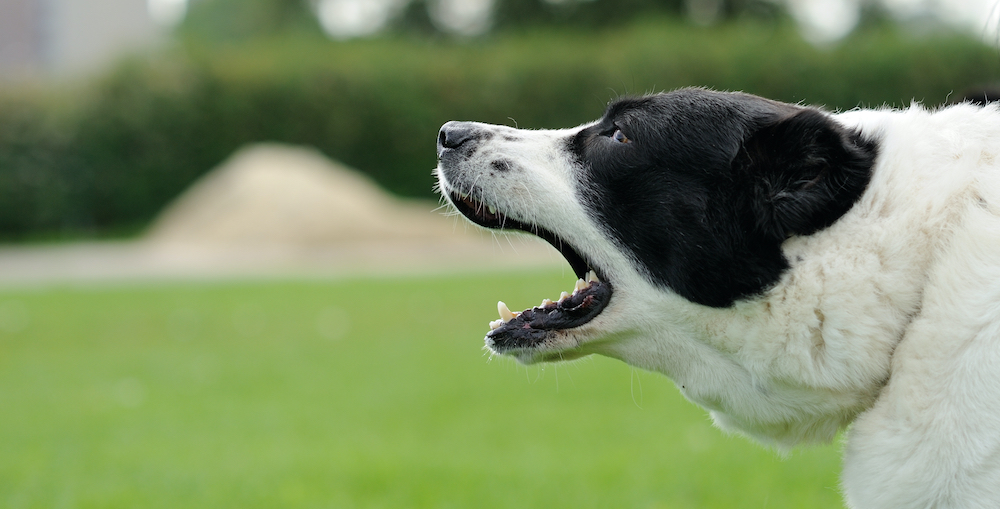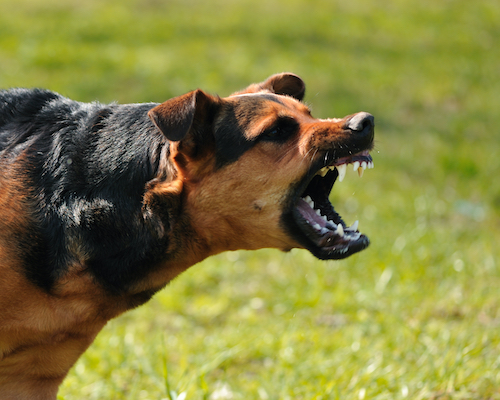
Not all dogs enjoy a trip to the park.
Lunging, barking, snapping and sometimes biting is something you will have come across when you take your dog out on your daily walks. You may recognise that dog is struggling and you give them plenty of space. Or you may be internally thinking ‘why doesn’t that person just train that dog?’ If you haven’t owned a dog that reacts in this way I think it’s hard to understand what that person is going through. I know through speaking to clients and friends, as it was what they thought before owning a dog that reacts.
If you have ever owned a dog that reacts to other dogs or to people, you will be that first person. As you have been there and can understand the stress and worry that person is going through, you will recognise what the frustration, worry, anxiety, embarrassment and stress of owning a reactive dog does to you. The military planning of walks, the worry and dread before even leaving the house ‘will today be a nice walk?’.
You have learnt to become a ninja, to move you and your dog out the way of anything that may cause your dog to react. Walks have often ended up with you in tears, whilst you struggle to understand why your dog is the best dog at home, but a nightmare on walks.
Reactivity is a reaction to something that is scaring or worrying your dog and can often take owners by surprise. In reality, there will have been an accumulative of things that have built up to end up at this stage.
When you own a dog who is normally chilled out and relaxed then has this sudden outburst, it can leave you embarrassed and shocked. I have also been there myself. My first own dog did just this and as he weighed 46kg he was a struggle to hold on to at times. For him the early days were fine. He wasn’t perfect and looking back now there are things I should have worked harder on and improved, but all in all, he was a great dog and my world. The problems started when he was older when he started reacting to other dogs on walks. It started just now and again, a dog I presumed he was unsure about, they don’t have to like each and every dog right? To start I wasn’t too concerned about the new behaviour, that was until it got to a point each and every dog we would see he started to lunge and bark at. Soon enough everyone started to give us a wide berth, as due to his size when he went up on his back legs he could be pretty intimidating.
I would go home in tears, what have I done wrong? Why is he acting like this? He is so good at home – why has he turned into this nightmare on walks? This was a big turning point in my life. As I started to try and learn about what was happening to him, any advice I was being given to help him just didn’t sit right with me. I wanted to help him as I could see he wasn’t happy and the more I looked into it the more fascinated I became about how dogs learn.
“If you don’t own a reactive dog but see someone struggling, please don’t try and help as in most situations you may make it harder for the dog and for the owner.”
When dealing with dog reactivity, there are certain steps you need to take if your dog is reacting. We need to always start with a vet check. I cannot stress enough how important this stage is, as we need to first rule out any underlying health issues that your dog may have. I know from experience, as this is the reason behind why Tye started to react in his old age. His health issues meant he lost his confidence to the point where he felt the need to keep any potential threat away from him. If your dog has underlying health issues, we need to work and fix these first, as no amount of training will help until this is resolved.
Once pain or injury is either treated or ruled out, we need to try and understand why your dog is reacting in this way, which is a more complex question. There are a number of reasons for dogs becoming reactive, which include (but not exclusive to) past experiences, lack of correct socialisation, insufficient training to learn self-control, a frightening experience, frustration, boredom, over excitement, attention-seeking or it may be genetic. This is hard to pinpoint sometimes as it may be due to a few different factors and experiences or there may be one when you can say you noticed a real change in your dog.
If we can understand what is happening to your dog when they react, we will be better equipped to help them. It is worth noting here as well that just because your dog is reacting does not mean they are aggressive. Dogs too often get labelled as being aggressive, when really all they are doing is reacting to the thing that is worrying or frightening them and their goal is to get it away from them, a common fear response.
This is what happens when your dog sees something that they perceive as being scary or frightening to them, which is what we call a trigger. Each and every dog will have different triggers that will make them react and cause their fear response. It may be other dogs, people, bikes, lorries, umbrellas, the postman, fireworks, the man in a hat or travelling in a car and just as us humans may have a trigger of spiders or heights.
We need to identify what your dog’s triggers are, so it is easier for us to help them and manage situations for them. Fear is an essential response for humans and dogs alike, if we didn’t feel fear we wouldn’t be able to protect ourselves from life or death situations. As humans, we can voice our worries and concerns and remove ourselves from the situation, dogs can’t always do this for themselves, so it is up to us to help them and read their body language.
When a dog reacts to whatever has caused them to worry, different dogs display it differently. We always need to remember that dogs do what works, for some you will see the barking and lunging others it may be more subtle signs that owners often miss, such as whining, pacing, lip licking or stillness. If they have used this in the past to get out of a situation, whether that be you moving them away or the other dog going away, they learn from past experiences and are likely to try the same again next time.
Our dogs speak to us so much through their body language, we just need to be listening to them more. There will be subtle signs when your dog is uncomfortable in a situation before they reach the point where they feel the need to bark, lunge or snap. If you can start to read these subtle signs from your dog, you can react sooner and take them out of the situation that is causing the fear response. People often miss these signs of fear and think with time they will just ‘get over it. Trust me, this doesn’t work.

What are the signs we are looking for?
You need to be looking at the whole dog in front of you and look at your dog’s body language in context. If your dog is licking their lips and there is another dog in sight, this could be a subtle and the first sign of stress, or they may be scent or social licking. If you are eating a big juicy steak and they are licking their lips, this is not stress and they are just in hope of you sharing!

Eyes – wide and bright eyes are a sign of a happy and comfortable dog. If their eyes are frantically darting from one side to the other looking or you can see the whites of their eyes at the bottom, this is a sign of worry. Smaller eyes along with intensity staring and dilated pupils can be a sign of anxiety. They may be so close they almost look shut. This is a sign of submission used to show the other dog that they are not a threat.
Ears – all dogs have different ears but there are certain positions you can look out for. Dogs ears can move independently from one another and you may have noticed one ear up and one ear held further back when then they are listening intently to something. If you notice that your dog’s ears are held high, they are on alert and feeling confident or focused on something. Ears flat or pulled back on their head is a sign of stress and worry, telling you that they are not comfortable in the situation.
Tail – what is your dog’s tail doing? Just because your dog’s tail is wagging does not mean your dog is happy. Learn what your dog’s tail does depending on what mood they are in. The obvious ones are the tail tucked right under showing us that the dog isn’t happy. Or the helicopter tail which swings around and goes all over the place when a dog is excited and happy. What about the low and slow wag or the tail that just stops moving? Or the low and somewhat lazy wag? Or the quick frantic tail? These are all signs of stress and worry and trying to work out a situation, so understanding what your own dog’s tail does is very important.
Posture – Does your dog look tense and stiff, has their hair on their body gone up on end? You will see the hair change around their neck, between their shoulders or at the base of their tail – this is a natural physical reaction that happens as it makes them look bigger and not something they do intentionally. It triggers in their body when they are alerted to something.
They may crawl on the floor a bit first, then even drop onto one side and expose their belly. This is a sign of submission with a dog that isn’t confident, showing the other dog they are no threat. If your dog crouches low and the tail is in-between their legs they may be worried and concerned, but also be aware that some dogs do drop their bodies and may go into stalk and stare when they are about to chase prey. Pacing, clingy to owners or trying to run away from the situation.
Mouth – as well as vocalising there are physical signs we can look out for with our dogs mouths. Licking their lips, lifting their lip or showing their teeth are all signs of worry and stress that they are not comfortable in the situation and they are communicating to the other dog they are not happy. They may also be panting heavier as well and yawing, growling to send us a stress signal. We can read into vocalising as well. A whine or cry is your dog telling you they are worried, a growl may be a warning but also be aware some dogs love to growl during play. A deep low growl is often a clear signal to us and the other dog that it is meant with intent. This is why we need to be looking at the whole situation, as a dog’s bark has many meanings such as alerting, play, and attention to name a few, so it is good to learn what each of your dog’s barks means.
A note on growling – A dog should never be told off for growling. It is part of the ladder of communication that they go through. If you remove the growling and they know they get told off for vocalising, they will just jump this step in the process and go for the snap instead which can then potentially lead to a bite.
A note on body language, we must remember that not all dogs are the same and you need to watch the dog in front of you, as they may not go through the steps in a predictable way and this is where a trained professional can help and guide you.
What can you do to help your dog?
You must always be taking in what your dog is doing through their body language, as these are indicators for you to see when your dog’s arousal is about to change and is about to go up. You can help by managing the environment and if you end up in a situation your dog isn’t comfortable in, take the dog out of the situation as quickly as possible.
We need to be giving them plenty of space away from their trigger, distance is key. Observe your dog’s body language, so you can spot the early signs of your dog being uncomfortable in the situation. We want you to build your relationship with your dog, so you should have their back and go to help them.
Give your dog days off walks. I know this is a hard one as we have it drilled into us to walk them twice a day every day, but this does not always benefit a reactive dog. All dogs have stress buckets just as we do and it can take up to and over 72 hours and over for their stress bucket to empty. A day off of walks, or two, will help them empty their stress bucket and you can provide them mental stimulation instead such as some training or scent work to tire their brain out. Or you may just find that your dog just wants to sleep all day.
Self-care is also important for you. As I have mentioned it is hard work owning a reactive dog. If you need a day off please do make sure you give yourself one. We also need to work on your body language. I often have to remind people to breathe and relax when in training sessions. The training isn’t always plain sailing, but what you need to remember is when you are tense or your breathing has changed, your dog can sense all of this and it is going straight down the lead to your dog. They will pick up on this and can make them more alert.
There will be walks when things won’t just seem to go right, but there will also be days where you come home beaming with a big grin on your face. I always suggest to clients to make a diary so they can track their progress. This also helps with that bad day you have. If you can sit and look at your diary and tick off all the good days you had previously, you just need to work out what that day didn’t turn out so well or just right it off. Dogs have bad days just like us and it is likely there would have been other factors in the equation that built up to it.
When we are working with dogs that are fearful, we are looking at building increased trust with our dogs, which boosts their confidence, resulting in a reduced likelihood of reactive or fearful behaviour. We are working on changing their emotional response to when they see other dogs. Use treats and food to motivate them to work harder. Dogs need food to survive, so we can make use of this to work on the training with them.
Don’t take them to a busy park if they are worried by other dogs and overwhelming them. This is called flooding and will not help your dog overcome their issues. It may end up making them worse.
Every day doesn’t need to be a training day. Go for quiet walks where you are unlikely to see anyone and give you and your dog days off. Keep in mind your end goal, but make sure this is broken down in simple and easy to reach steps. Little successes along the way will keep the momentum going with your training.
If you don’t own a reactive dog but see someone struggling, please don’t try and help as in most situations you may make it harder for the dog and for the owner. Just give them a nod and a warm smile and provide them plenty of space keeping your dog under control or put your dog on a lead. If you only take away one thing from this, let it be that you should never let your dog run over to their dog reassuring them that ‘he’s friendly’, as you are likely to ruin their training and set them back days if not weeks.
If you are struggling with your dog, I suggest getting some professional help with their training. Living with a reactive dog can be lonely and stressful, but know that help and support is out there.
Our Expert
Written by published author Carrie Stuthridge IABTC/AA, DTC Approved Instructor, Member of PPG who runs and owns Carrie’s Canines & Friends in Coventry, established in 2016. Carrie is Coventry’s number 1 puppy training specialist and runs puppy and older dog training classes in Coventry. She also provides private training sessions to help improve the dogs and owners relationships and lives together.
For More Information: www.carriescanines.co.uk
